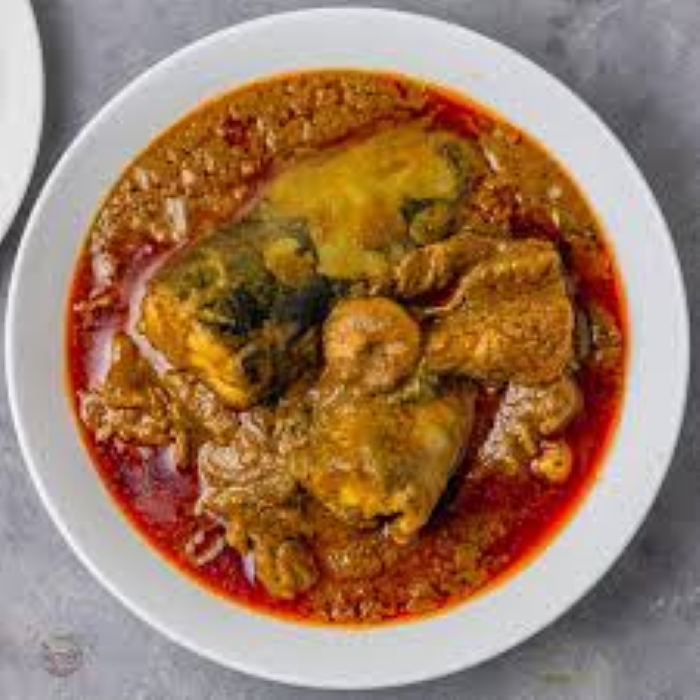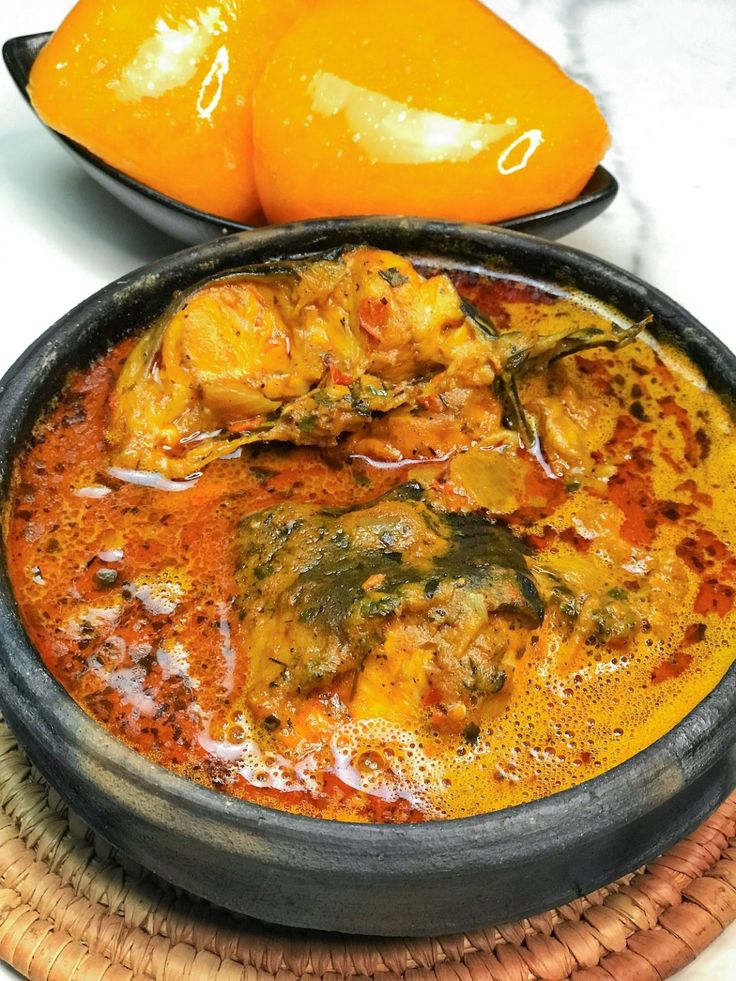Banga soup and its many benefits
Banga soup is a beloved delicacy in the Nigerian cuisine, cherished for its rich, flavourful taste and cultural significance.
This traditional soup, primarily made from palm fruit extract, not only holds a special place at the dining table, but also highlights the agricultural practices and resources of the regions where it is popular.
Let’s dive into the world of Banga soup by exploring its ingredients, preparation methods, and its profound connection to agriculture.
What does banga soup contain?
The soup contains several core ingredients that give it its distinctive taste and nutritional value. These include:
- Palm fruit extract: The base of the soup, providing a rich and creamy texture.
- Fresh fish or meat: Adds protein and depth of flavour.
- Spices: A blend of traditional spices such as beletete, oburunbebe stick, ataiko, and irugeje for a unique flavour profile.
- Vegetables: Often, bitter leaves or other local greens are added for additional nutrients. The combination of these ingredients makes the soup, not only delicious, but also nutritious, offering a balance of carbohydrates, proteins, and essential vitamins and minerals.

Which tribe owns banga soup?
Banga soup is predominantly associated with the Urhobo people of the Niger Delta region in Nigeria. However, it is widely enjoyed by various ethnic groups, including the Itsekiris and Ijaws. Each group has its unique touch, but the core preparation remains similar, celebrating the cultural heritage and agricultural bounty of the region.
Which tribe owns atama soup?
Atama soup, on the other hand, is primarily linked to the Efik and Ibibio people of Nigeria. While banga soup and atama soup share some similarities, such as the use of palm fruit, atama soup is distinguished by the inclusion of atama leaves, giving it a distinct flavour and identity.
How to make banga soup thick in Nigeria
Achieving the perfect thickness is a common goal for many cooks. Here are some tips:
- Use ripe palm fruit: Extract more juice and pulp from fully ripe palm fruits for thicker consistency.
- Simmer longer: Allow the soup to cook slowly, reducing the liquid and thickening naturally.
- Add ground seeds: Ingredients like egusi (melon seeds) or groundnut can help thicken the soup while adding richness.
Banga soup ingredients
Here’s a detailed list of ingredients typically used in the preparation of this delicious soup:
- Palm fruit extract
- Fresh fish or assorted meat
- Crayfish
- Banga spices (ataiko, irugeje, beletete)
- Bitter leaves, scent leaves or other vegetables
- Stock cubes
- Salt and pepper to taste
Each ingredient plays a crucial role, from providing the base flavour to adding depth and complexity to the soup.
Banga soup recipe
Follow this step-by-step guide to prepare the soup:
- Extract the palm fruit juice: Boil the palm fruits until tender, then pound to extract the juice.
- Prepare the base: Pour the extracted juice into a pot and bring to a boil.
- Add proteins: Introduce your choice of fresh fish or meat.
- Season: Add the banga spices, crayfish, stock cubes, salt, and pepper.
- Simmer: Let the soup cook until it thickens to your desired consistency.
- Add vegetables: Incorporate bitter leaves or other greens towards the end of the cooking process.
- Serve: Enjoy with edible starch, pounded yam or eba.
Banga soup spices
The spices used in preparing this soup are crucial for its unique taste. Common spices include:
- Ataiko and Irugeje: These are traditional spices that give the soup its distinctive flavour.
- Oburunbebe stick: Adds a rich aroma and depth to the soup.
- Beletete: Another spice that enhances the overall taste and aroma.
Delta banga soup ingredients
In the Delta region, the ingredients may vary slightly to include:
- Snails
- Periwinkles
- Bush meat
These regional variations add unique flavours and textures, showcasing the diversity within the Nigerian cuisine.
Banga soup and starch
This rich and delicious soup is traditionally enjoyed with starch, such as:
- Pounded yam
- Eba (made from garri)
- Starch (a sticky, yellow dough-like accompaniment)
These starches complement the rich, flavourful soup and provide a balanced meal.
Agricultural significance of banga soup ingredients
The primary ingredient, palm fruit, is a major agricultural product in Nigeria. Its cultivation supports local farmers and contributes to the economy. The farming practices involved in growing palm fruit, vegetables, and other ingredients used in the soup highlight the interdependence of agriculture and culinary traditions.
Palm fruit
Palm fruit, the primary ingredient, is sourced from palm trees that are widely cultivated in the country. The use of fresh fish or meat also underscores the significance of livestock farming in Nigeria. Additionally, the various spices and vegetables used in the soup are often grown by local farmers, emphasising the importance of crop diversity and rotation.
5 nutritional benefits of banga soup
Banga soup, a popular Nigerian delicacy, is more than just a flavourful dish. This savoury soup is made from a variety of ingredients, many of which are sourced from local farms and markets. Here are some of the nutritional value:
- Rich in vitamins and minerals: It is an excellent source of vitamins A, C, and E, as well as minerals like potassium, magnesium, and iron. These nutrients are essential for maintaining healthy vision, immune function, and red blood cell production.
- Antioxidant properties: The palm fruit used in the soup contains antioxidants that help protect the body against free radicals, which can cause cell damage and lead to chronic diseases like cancer and heart disease.
- Good source of protein: Contains protein-rich ingredients like fish or meat, making it an excellent option for those looking to increase their protein intake. Protein is essential for building and repairing muscles, organs, and tissues.
- Supports healthy digestion: The fiber content in the soup, particularly from the palm fruit and vegetables, helps promote healthy digestion, prevent constipation, and support healthy gut bacteria.
- May help lower cholesterol: The palm fruit used in the soup contains a compound called saponin, which has been shown to help reduce bad, low-density lipoproteins (LDL) cholesterol levels and improve overall heart health.
Conclusion
Banga soup is more than just a dish; it’s a celebration of cultural heritage and agricultural practices. By understanding its ingredients, preparation methods, and regional variations, we can appreciate the richness of this Nigerian cuisine. Whether you enjoy it with fresh fish or traditional starches, banga soup remains a delicious and nutritious part of many people’s diets. Indeed, farming is good.


2 Comments
I love the ijaw type of banga soup. The seafood makes a lot of difference.
The Banga soup is also similar to the igbo’s ofe akwu.
They all taste very very nice